
Contact Us
George R. Brown Hall, W103
George R. Brown Hall, W116
Department of Chemistry
6100 Main Street MS-60
Houston, TX 77005
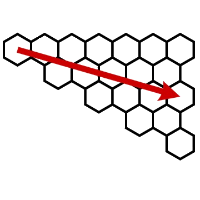


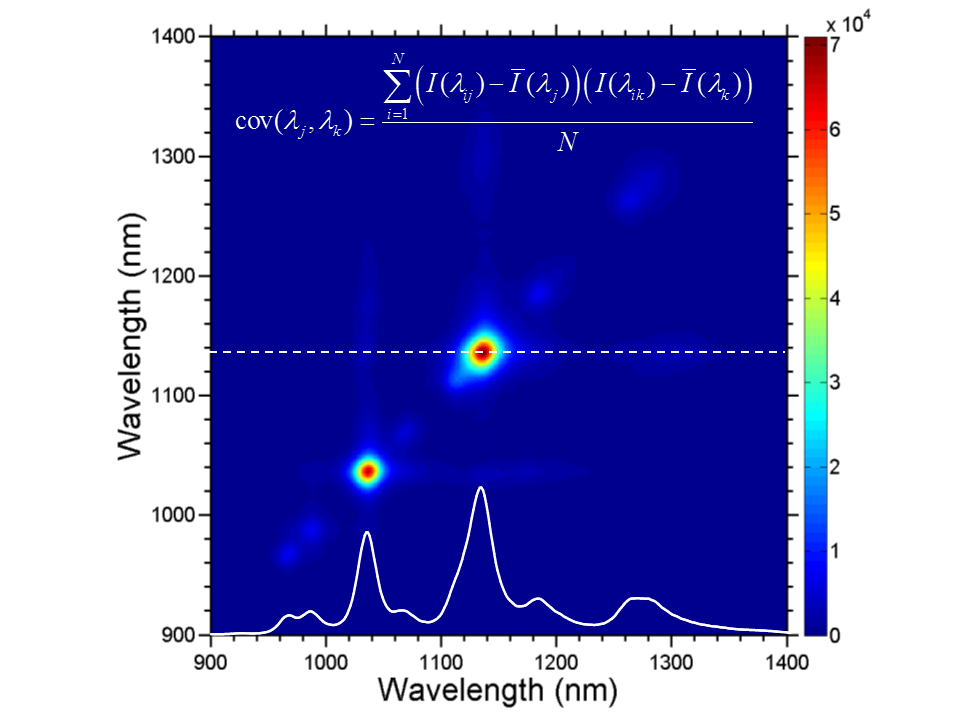
Given the complex nature of SWCNT dispersions, it has been necessary to develop analytical tools to better study and characterize nanotubes in solution. This is due to the fact that structurally unsorted SWCNT samples are dominated by heterogeneity in their composition, as nanotubes come in many different diameters and chiral angles. As an added degree of heterogeneity, each nanotube species has its own associated length distribution, aggregation state, and sidewall defect density. In our group, we have mainly exploited the remarkable SWCNT property of species-specific short-wave infrared fluorescence within our methods. Throughout our work, we have used the optical properties of nanotubes to better characterize their structure-specific abundance, length, and aggregation states. In the past few years, we have focused on two main analytical methods, variance spectroscopy and fluorimetric analysis. Variance spectroscopy is a new technique that measures and analyzes differences among local fluorescence spectra in dilute SWCNT suspensions. Through this method, we can determine the composition of such samples and compute the fluorimetric efficiency of specific structural forms. In addition, we can calculate the spatial correlations between intensity fluctuations at different wavelengths to produce the spectra of homogeneous sub-populations and reveal the early stages of nanoparticle heteroaggregation. Recently, we have developed skewness analysis in variance spectroscopy to probe highly enriched SWCNT samples for homoaggregates, which are becoming more important as a result of advanced structural sorting techniques. In our fluorimetric analysis, our lab uses SWIR fluorimetry with discrete excitation wavelengths to efficiently determine SWCNT sample composition. Using our knowledge from our basic spectroscopic studies of single nanotubes and bulk enriched samples, we have developed a model for SWCNT photoluminescence and photoluminescence excitation spectral profiles which, combined with rigorous absorption spectral analysis, allows for the reliable quantitative determination of sample composition.
Zheng, Y.; Sanchez, S. R.; Bachilo, S. M.; Weisman, R. B.; Indexing the Quality of Single-Wall Carbon Nanotube Dispersions Using Absorption Spectra. J. Phys. Chem. C, 2018, 122 (8), 4681-4690.
Sanchez, S. R.; Bachilo, S. M.; Kadria-Vili, Y.; Weisman, R. B. Skewness Analysis in Variance Spectroscopy Measures Nanoparticle Individualization. J. Phys. Chem. Lett., 2017, 8, 2924-2929.
Streit, J. K.; Bachilo, S. M.; Sanchez, S. R.; Lin, C.-W.; Weisman, R. B. Variance Spectroscopy. J. Phys. Chem. Lett., 2015, 6, 3976-3981.
Streit, J. K.; Bachilo, S. M.; Weisman, R. B. Chromatic Aberration Short-Wave Infrared Spectroscopy: Nanoparticle Spectra without a Spectrometer. Anal. Chem., 2013, 85, 1337-1341.
Streit, J. K.; Bachilo, S. M.; Naumov, A. V.; Khripin, C.; Zheng, M.; Weisman, R. B. Measuring Single-Walled Carbon Nanotube Length Distributions from Diffusional Trajectories. ACS Nano, 2012, 6, 8424-8431.
Rocha, J. D.; Bachilo, S. M.; Ghosh, S.; Arepalli, S.; Weisman, R. B. Efficient Spectrofluorimetric Analysis of Single-Walled Carbon Nanotube Samples. Anal. Chem., 2011, 83, 7431-7437.
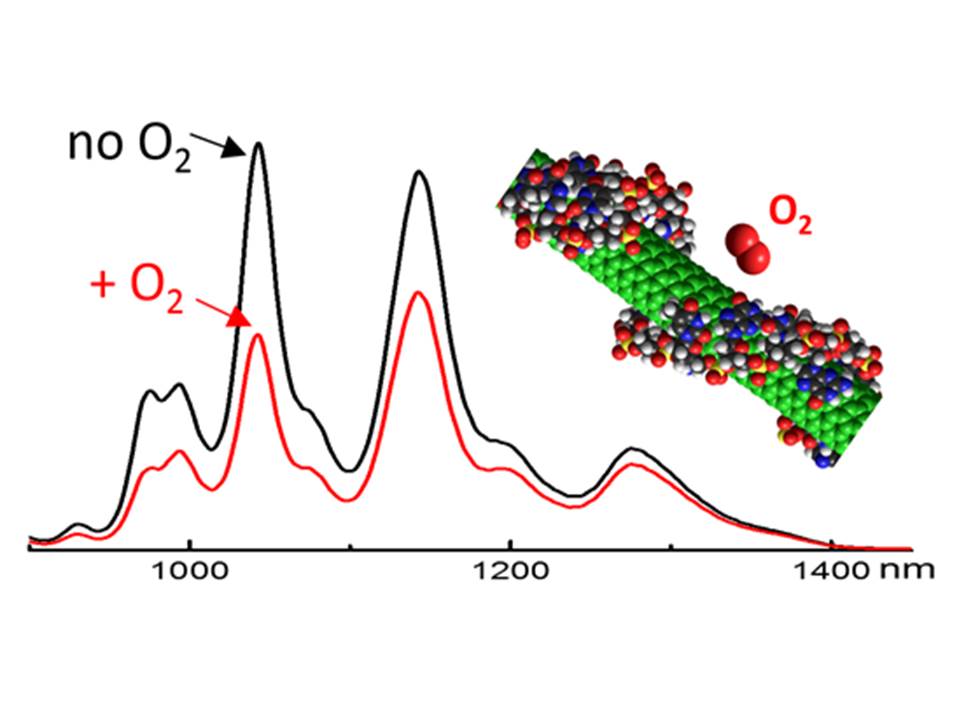
Since the discovery of the short-wave infrared (SWIR) fluorescence of single-walled carbon nanotubes (SWCNTs), our group has focused on the measurement of absorption and emission spectra for many different semiconducting nanotube species. Our investigations use both bulk and single particle techniques, including custom built spectroscopic (UV-Vis-SWIR absorption, SWIR fluorescence, and Raman) and SWIR fluorescence microscopic systems, to understand the complex physical properties on SWCNTs. Through these methods, as well as the newly developed method of variance spectroscopy (described in the analytical method development tab), we have determined various photophysical parameters such as the structure-specific absorption cross sections and the fluorescence quantum yields for many different SWCNT species. In addition, we have worked to analyze the electronic structure of semiconducting SWCNTs by understanding the fluorescence side bands and fluorescence excitation spectra. Finally, we have recently begun using our spectroscopic tools to probe the physical properties and wrapping characteristics of various single stranded DNA oligomers on the nanotube surface. As a result of this work, we have discovered that dissolved oxygen provides a means of determining specific recognition sequences for SWCNT structural sorting.
Zheng, Y.; Bachilo, S. M.; Weisman, R. B. Quenching of Single-Walled Carbon Nanotube Fluorescence by Dissolved Oxygen Reveals Selective Single-Stranded DNA Affinities. J. Phys. Chem. Lett., 2017, 8, 1952-1955.
Kadria-Vili, Y.; Sanchez, S. R.; Bachilo, S. M.; Weisman, R. B. Assessing Inhomogeneity in Sorted Samples of Single-Walled Carbon Nanotubes through Fluorescence and Variance Spectroscopy. ECS J. Solid State Sci. Technol., 2017, 6 (6), M3097-M3102.
Sanchez, S. R.; Bachilo, S. M.; Kadria-Vili, Y.; Lin, C.-W.; Weisman, R. B. (n,m)-Specific Absorption Cross Sections of Single-Walled Carbon Nanotubes Measured by Variance Spectroscopy. Nano Lett., 2016, 16, 6903-6909.
Kadria-Vili, Y.; Bachilo, S. M.; Blackburn, J. L.; Weisman, R. B. Photoluminescence Side Band Spectroscopy of Individual Single-Walled Carbon Nanotubes. J. Phys. Chem. C, 2016, 120, 23898-23904.
Streit, J. K.; Bachilo, S. M.; Ghosh, S.; Lin, C.-W.; Weisman, R. B. Directly Measured Optical Absorption Cross Sections for Structure-Selected Single-Walled Carbon Nanotubes. Nano Lett., 2014, 14, 1530-1536.
Bachilo, S. M.; Strano, M. S.; Kittrell, C.; Hauge, R. H.; Smalley, R. E.; Weisman, R. B. Structure-Assigned Optical Spectra of Single-Walled Carbon Nanotubes. Science, 2002, 298, 2361-2366.
O'Connell, M. J.; Bachilo, S. H.; Huffman, C. B.; Moore, V. C.; Strano, M. S.; Haroz, E. H.; Rialon, K. L.; Boul, P. J.; Noon, W. H.; Kittrell, C.; Ma, J.; Hauge, R. H.; Weisman, R. B.; Smalley, R. E. Band Gap Fluorescence from Individual Single-Walled Carbon Nanotubes. Science, 2002, 297, 593-596.
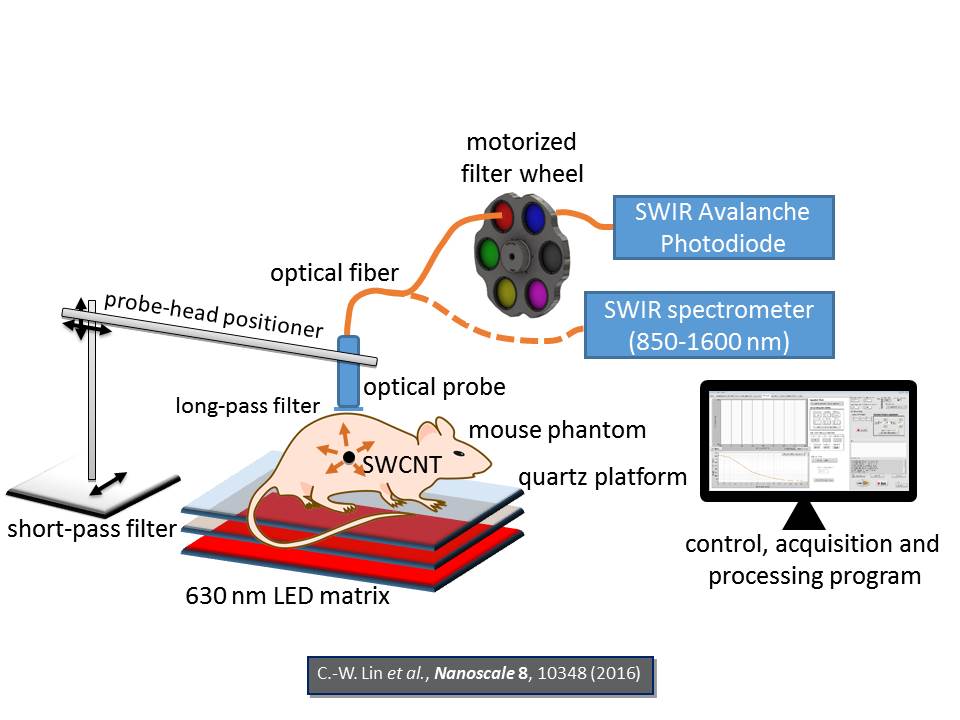
Optical imaging in biological media is often hampered by the scattering properties as well as the intrinsic autofluorescence of biological tissue. However, we can limit the effects of scattering by moving the detection into the short-wave infrared region (850-1600 nm) of the electromagnetic spectrum. In addition, the autofluorescence can be minimized by using excitation wavelengths in the red portion of the visible spectrum. This makes single-walled carbon nanotubes a strong potential candidate as fluorescent agents in biomedical imaging. Another advantage is the wealth of nanotube structures, each having its own unique optical properties. This allows for potential applications requiring spectrally multiplexed data, such as the detection of multiple cancers at the same time. Currently, we are focusing on conjugating SWCNTs onto tumor-specific antibodies for both in vitro and in vivo imaging. Also, we have developed both an optical scanner and a technique to better detect SWCNTs inside biological tissue. This technique, termed spectral triangulation, aims at locating antibody-conjugated SWCNT immunoprobes in vivo by measuring the intensity ratio of two distinct SWCNT emission wavelengths at sparse points of a specimen surface. Using spectral triangulation, we can determine the 3D location of SWCNTs with an error less than the size of the SWCNT source (around 1 mm).
Lin, C.-W.; Yang, H.; Sanchez, S. R.; Mao, W.; Pang, L.; Beckingham, K. M.; Bast, Jr., R. C.; Weisman, R. B. In Vivo Optical Detection and Spectral Triangulation of Carbon Nanotubes. ACS Appl. Mater. Interfaces, 2017, 9 (48), 41680-41690.
Lin, C.-W.; Weisman, R. B. In Vivo Detection of Single-Walled Carbon Nanotubes: Progress and Challenges. Nanomedicine, 2016, 11, 2885-2888.
Lin, C.-W.; Bachilo, S. M.; Vu, M; Beckingham, K. M.; Weisman, R. B. Spectral Triangulation: A 3D Method for Location Single-Walled Carbon Nanotubes In Vivo. Nanoscale, 2016, 8, 19, 10348-10357.
Leeuw, T. K.;Reith, R. M.; Simonette, R. A.; Harden, M. E.; Cherukuri, P.; Tsyboulski, D. A.; Beckingham, K. M.; Weisman, R. B. Single-Walled Carbon Nanotubes in the Intact Organism: Near-Ir Imaging and Biocompatibility Studies in Drosophila. Nano Lett., 2007, 7, 2650-2654.
Cherukuri, P.; Gannon, C. J.; Leeuw, T. K.; Schmidt, H. K.; Smalley, R. E.; Curley, S. A.; Weisman, R. B. Mammalian Pharmacokinetics of Carbon Nanotubes Using Intrinsic near-Infrared Fluorescence. Proc. Natl. Acad. Sci. U.S.A., 2006, 103, 18882-18886.
Cherukuri, P.; Bachilo, S. M.; Litovsky, S. H.; Weisman, R. B. Near-Infrared Fluorescence Microscopy of Single-Walled Carbon Nanotubes in Phagocytic Cells. J. Amer. Chem. Soc., 2004, 126, 15638-15639.
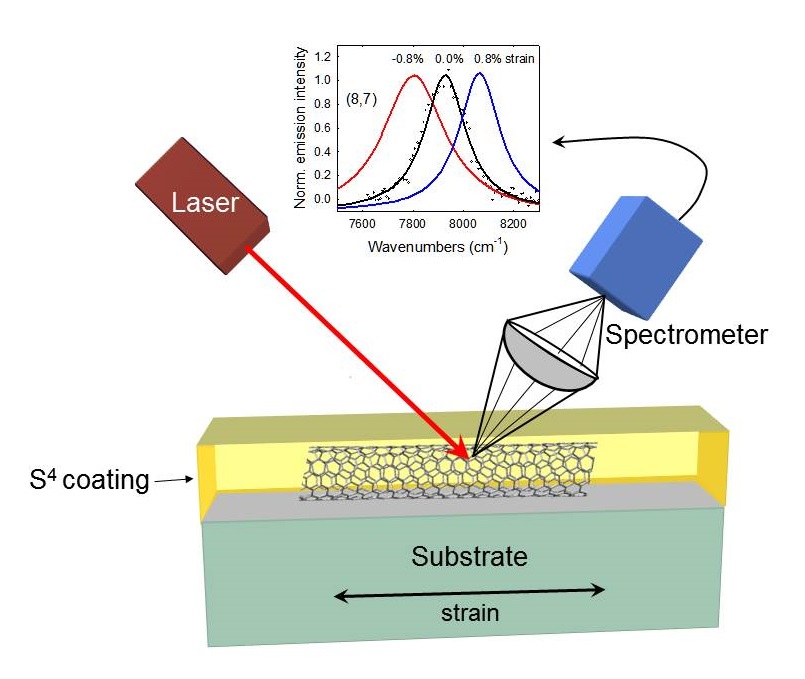
We have developed an effective non-contact full-field strain sensing technology that uses a dual-layer composite coating containing single-walled carbon nanotubes embedded in a polymer film. In this strain-sensing smart skin (S4), semiconducting carbon nanotubes are axially strained by load transfer from the underlying substrate, altering their band gaps and shifting the characteristi cwavelengths at which they fluoresce. Strains are deduced using a non-contact readout device that includes a small interrogation laser and a short-wave infrared spectrometer to capture and analyze local nanotube emission spectra. Point-by-point scanning over the substrate surface allows acquisition of 2D strain maps with sub-millimeter spatial resolution. An important advance is the use of a sub-micron thick sensing layer containing nanotubes underneath a transparent polymeric top layer. This dual-layer design preserves photoluminescence intensity while providing environmental protection for the nanotube sensors. Strain maps optically measured on a stressed drilled copper test plate coated with S4 film display detailed patterns of plastic strain that match the predicted stress concentration pattern in the specimen. We are optimistic that this S4 method can become a practical industrial technology for advanced strain sensing in a range of important structural health monitoring applications.
Sun, P.; Bachilo, S. M.; Nagarajaiah, S.; Weisman, R. B. Toward Practical Non-Contact Optical Strain Sensing Using Single-Walled Carbon Nanotubes. ECS J. Solid State Sci. Technol., 2016, 5, M3012-M3017.
Sun, P.; Bachilo, S. M.; Weisman, R. B.; Nagarajaiah, S. Carbon Nanotubes as Non-Contact Optical Strain Sensors in Smart Skins. J. Strain Anal. Eng., 2015, 50, 505-512.
Sun, P.; Kim, J. H.; Bachilo, S. M.; Weisman, R. B.; Nagarajaiah, S. Smart Skin Optical Strain Sensor Using Single Wall Carbon Nanotubes, Proc. SPIE Int. Soc. Opt., 2014, 9061, 906120.
Withey, P. A.; Vemuru, V. S. M.; Bachilo, S. M.; Nagarajaiah, S.; Weisman, R. B. Strain Paint: Noncontact Strain Measurement Using Single-Walled Carbon Nanotube Composite Coatings. Nano Lett., 2012, 12, 3497-3500.
Leeuw, T. K.; Tsyboulski, D. A.; Nikolaev, P. N.; Bachilo, S. M.; Arepalli, S.; Weisman, R. B. Strain Measurements on Individual Single-Walled Carbon Nanotubes in a Polymer Host: Structure-Dependent Spectral Shifts and Load Transfer. Nano Lett., 2008, 8, 826-831.